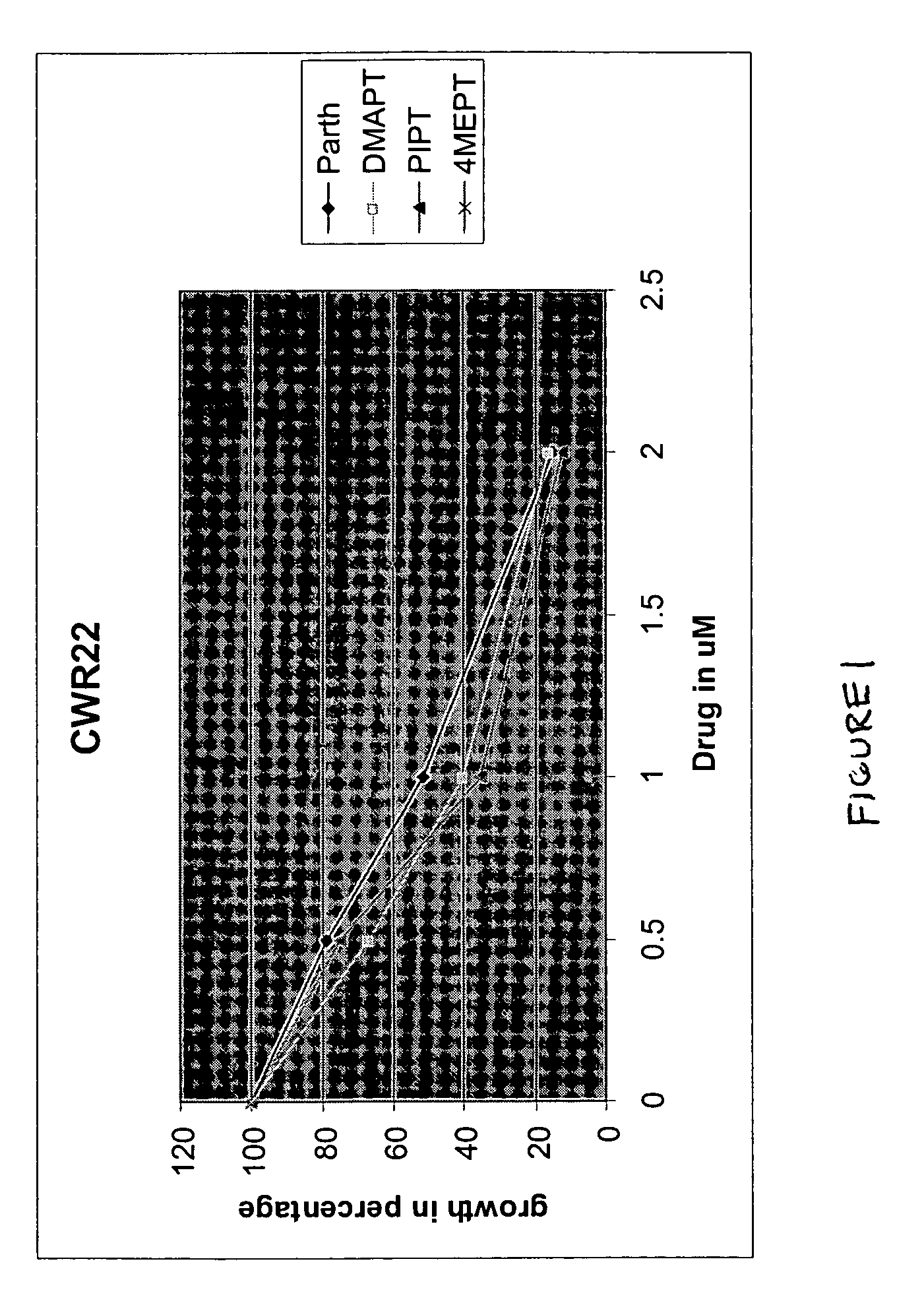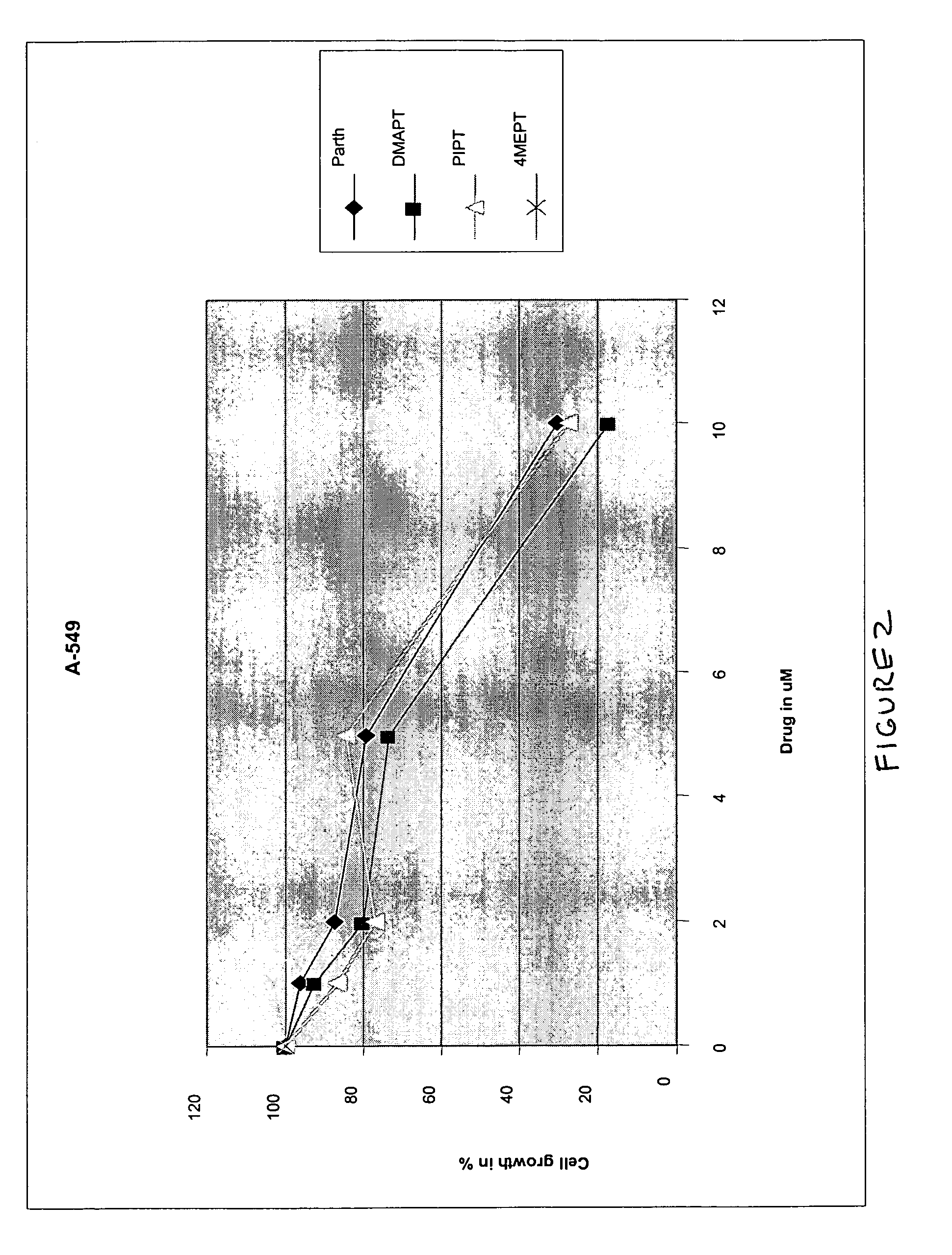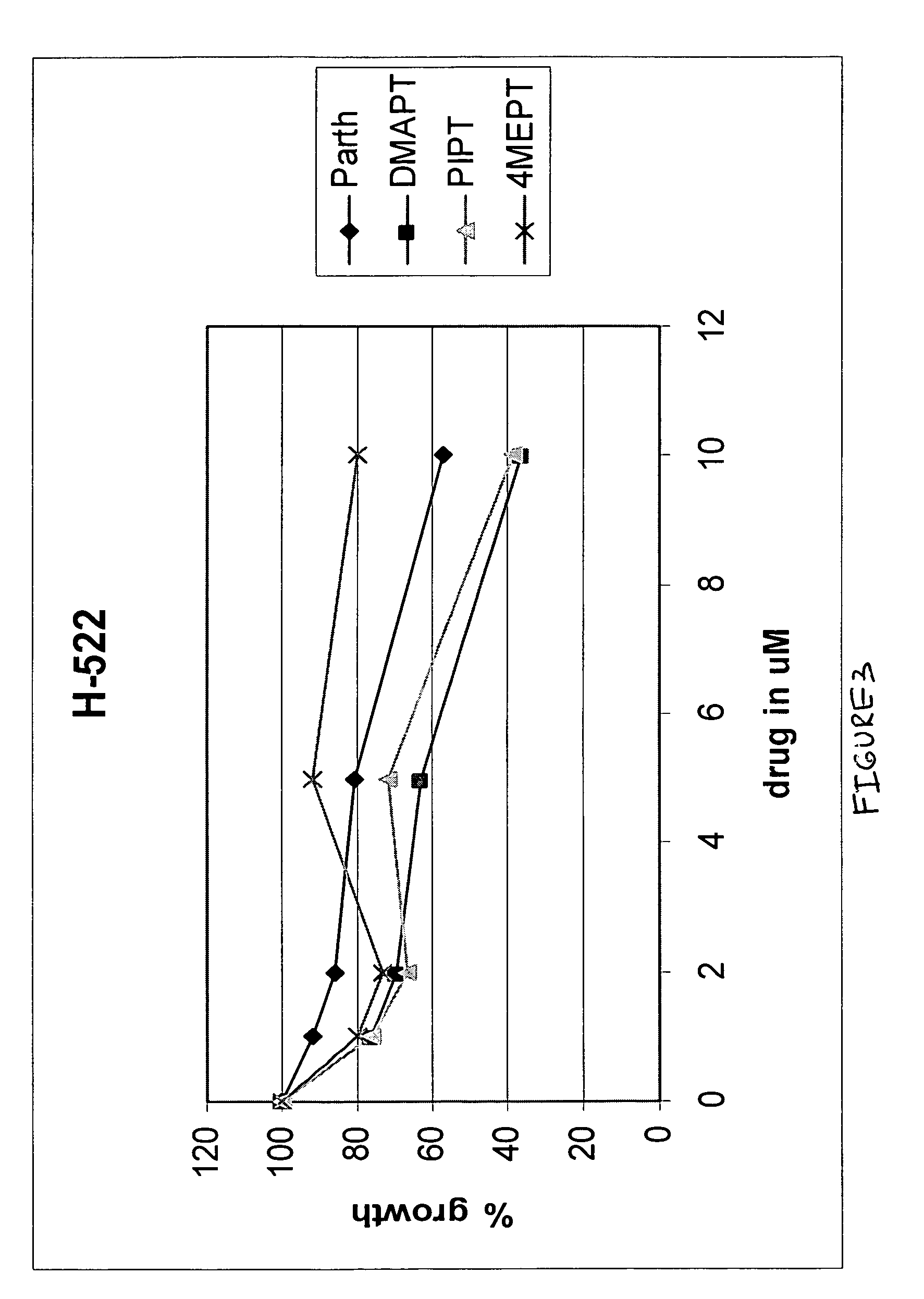Use of parthenolide derivatives as antileukemic and cytotoxic agents
a technology of parthenolide and cytotoxic agent, which is applied in the direction of biocide, heterocyclic compound active ingredients, drug compositions, etc., can solve the problems of limiting its development as a therapeutic agent, and achieve the effect of inhibiting the growth of said cancer cells
- Summary
- Abstract
- Description
- Claims
- Application Information
AI Technical Summary
Benefits of technology
Problems solved by technology
Method used
Image
Examples
example 1
General Synthetic Procedure for the Preparation of 11S,11,13-Dihydro,13-Substituted Aminoparthenolides
[0150]A mixture of parthenolide (Sigma P 0667, 100 mg, 0.4 mmol), the appropriate primary amine or secondary amine (2 mmol), and triethylamine (1 to 2 mL) in 30 mL of anhydrous ethanol was stirred at a specific temperature ranging from ambient temperature to the temperature of the refluxing solvent utilized, or was left to stand in the refrigerator (−20° C. to 4° C.) overnight for 24 hours. Ethanol, triethylamine and / or the appropriate volatile amine were then evaporated under vacuum in a rotary evaporator. The resulting residue was subjected to silica gel column chromatographic purification using chloroform-methanol or methylene chloride-methanol mixed solvent as the mobile phase. NMR (Varian, 300 MHz and 400 MHz) and GC / MS (Agilent, 6890GC and 5973MSD) analysis methodologies were utilized to assure the identity and purity of the synthetic compounds.
example 2
11S,11,13-Dihydro,13-dimethylaminoparthenolide (DMAPT)
[0151]Parthenolide (100 mg, 0.4 mmol), dimethylamine (2M in methanol, 1 mL), triethylamine (2 mL), ethanol (30 mL) were refluxed overnight. After column purification, 109 mg of pale yellow 11S,11,13-dihydro,13-dimethylaminoparthenolide was obtained (Yield: 93%). Melting point: 143-144° C. 1H-NMR (300 MHz, CDCl3): δ 5.22 (1H, d), 3.85 (1H, t), 2.75 (2H, m), 2.65 (1H, dd), 2.5-2.3 (3H, m), 2.25 (6H, s), 2.5-2.0 (5H, m), 1.7 (3H, s), 1.3 (3H, s), 1.3-1.15 (1H, m). 13C-NMR (300 MHz, CDCl3): δ 176.1, 134.4, 124.8, 81.9, 66.4, 61.3, 57.6, 47.8, 46.4, 46.1, 41.0, 36.6, 29.9, 24.0, 17.2, 16.9. Mass Spec (GC-MS): 293 (M+) Retention time: 12.56 minutes. Ultra-violet (Methanol): λmax at 214 nm. Infra-Red (Nujol): 1757.9, 1460, 1377 cm−1. X-ray crystallographic analysis using a Nonius KappaCCD diffractometer DMAPT (11S,11,13-dihydro,13-dimethylaminoparthenolide) has the S-configuration at C-11.
example 3
11S,11,13-Dihydro,13-diethylaminoparthenolide
[0152]Parthenolide (100 mg, 0.4 mmol), diethylamine (200 mg, 2.7 mmol), triethylamine (2 mL), ethanol (30 mL) were refluxed overnight. After column purification, 114 mg of yellow 11S,11,13-dihydro,13-diethylaminoparthenolide was obtained (Yield: 88%).
PUM
| Property | Measurement | Unit |
|---|---|---|
| temperature | aaaaa | aaaaa |
| temperature | aaaaa | aaaaa |
| temperature | aaaaa | aaaaa |
Abstract
Description
Claims
Application Information
 Login to View More
Login to View More - R&D
- Intellectual Property
- Life Sciences
- Materials
- Tech Scout
- Unparalleled Data Quality
- Higher Quality Content
- 60% Fewer Hallucinations
Browse by: Latest US Patents, China's latest patents, Technical Efficacy Thesaurus, Application Domain, Technology Topic, Popular Technical Reports.
© 2025 PatSnap. All rights reserved.Legal|Privacy policy|Modern Slavery Act Transparency Statement|Sitemap|About US| Contact US: help@patsnap.com



